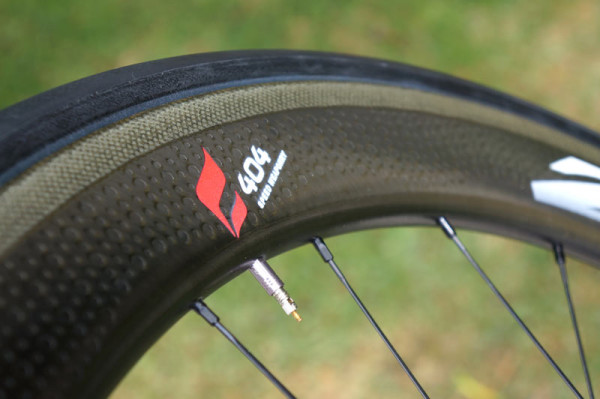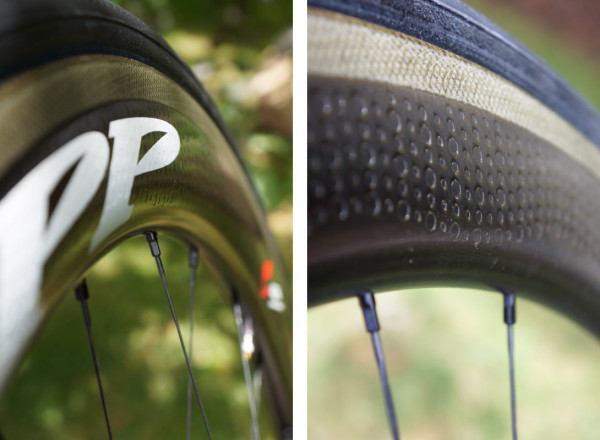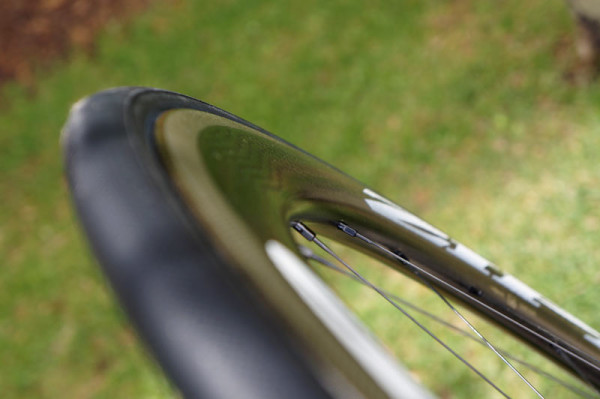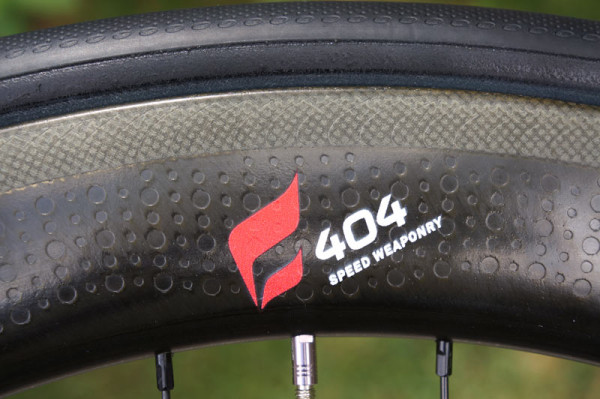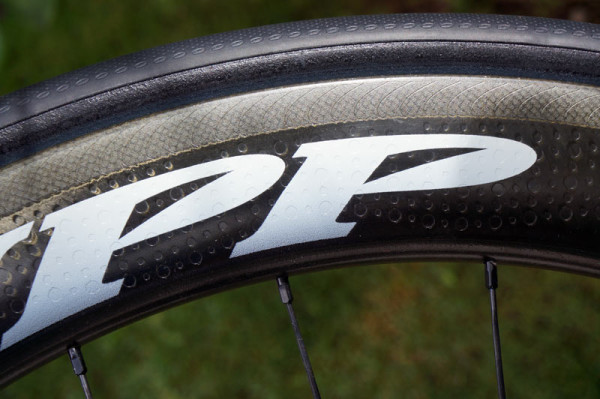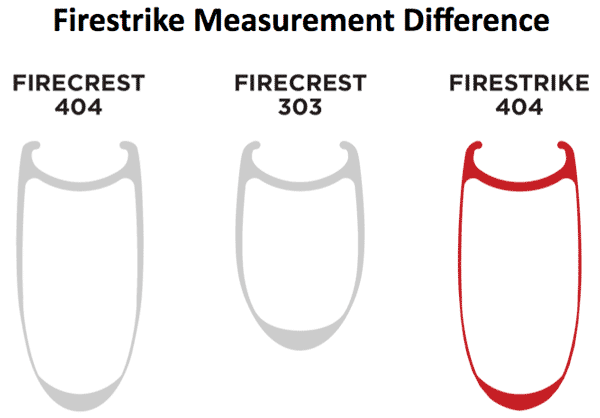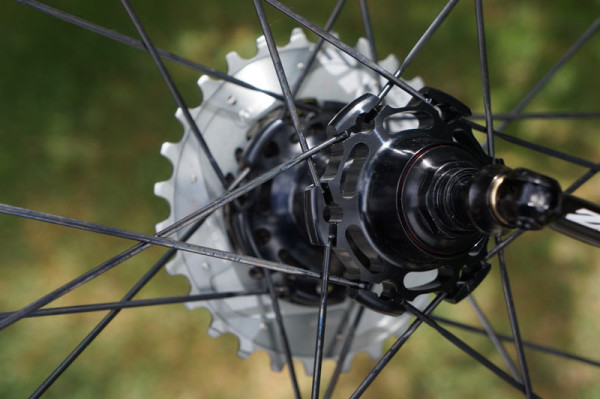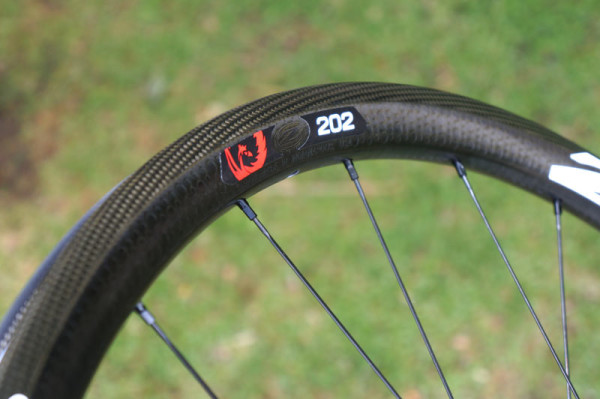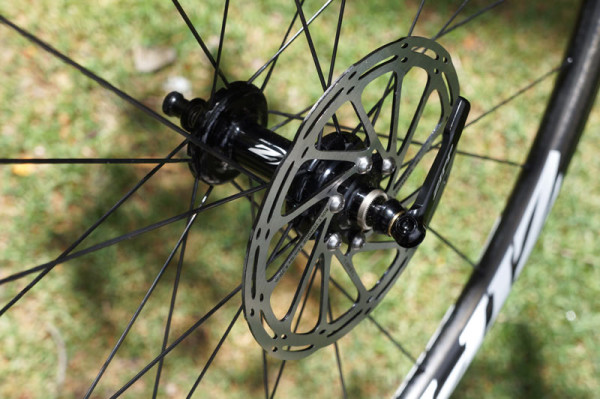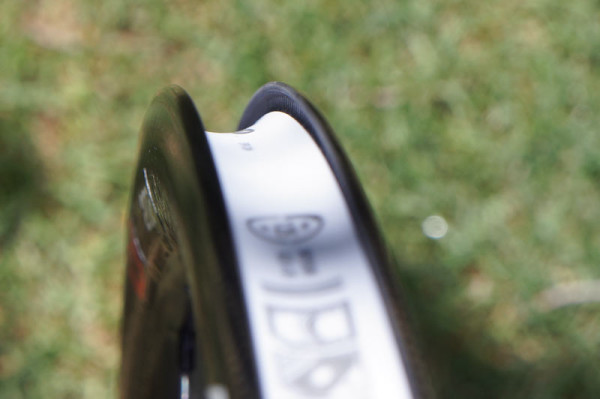Zipp’s been making aero wheels for 27 years by looking at the physical forces that slow a rider down. Drag, rolling resistance, grade, etc. The biggest offender is aerodynamic drag, and that’s where their focus is. With the Firecrest design debut in 2010, they upped their game with wide, rounded deep section rims.
The new 404 Firestrike is the next generation, and it goes beyond aerodynamics to further improve speed. They’re happy with their shapes, particularly the current 303 Firecrest, but Zipp found three different things that affected rider confidence: Stability, braking and cornering
Mathematically derived (CFD) rim shape that use the same rim shape patent as Firecrest, but with a new shape and new ABLC dimple pattern. The first piece of the puzzle is something their competitors have been talking about over the past couple years: Stability.
The new ABLC dimple pattern stands for Aerodynamic Boundary Layer Control and is a frequency tuned wave pattern that’s timed to shed vortices at higher frequency and shorter amplitude. Here’s what that means in practice…
When you’re riding in a cross wind, a low pressure zone builds up on the side of the rim opposite the wind. As the wind blows, say right to left, it pushes the rider to the left. When that low pressure zone detaches, the wheel will come back into the wind a bit, pushing the rider to the right. If the low pressure zone is allowed to build up, that kick back into the wind can be sudden and forceful enough to jerk the bike, potentially causing an accident.
So, the new dimple pattern and wider rim shape work in concert to shed the low pressure zone more quickly (higher frequency), which keeps the low pressure bubble small (low amplitude).
These changes also yielded a 34% reduction in side force, which means less dramatic “pushes” against the wheels at a given cross wind speed. On the road, that means you’re able to stay tucked in the aero extensions longer rather than having to sit up and hold the wider bull horns for stability.
The next piece of the puzzle is braking. Improve braking performance, particularly in wet weather, and the rider will be more confident carrying speed deeper into corners or descending. To up the ante on carbon braking performance, they’ve introduced a design called Showstopper. It’s part mechanical, part chemical, and they say it actually matches or bests alloy rim braking when wet.
This is accomplished by mixing Silicon Carbide (SiC) into the resin used on the brake track. SiC is one of the hardest materials on earth, which ups the coefficient of friction and prolongs the life of the ridges molded into the brake track. SiC does do a good job of mitigating heat in some applications, but because it’s mixed in the resin here and used in a very small particle size, that’s not one of the claimed benefits here. That said, the heat management and pad material introduced with the Firecrest rims, namely resin system and layup plus their Tangente Platinum Pro Evo pads, are all here, too, and they say they haven’t had any heat related failures since their introduction.
The ridges are the other aspect, helping to shed water quickly, and behind those are a molded in surface texture to improve friction. All of that tech and design is for wet weather improvements. In dry conditions, the braking performance is the same as their Firecrest rims.
All of that comes about with a new molding process. In addition to the above benefits, they say it increases impact resistance, and they get a new Impress printed logo rather than decals. With all the attention to dimple shape and placement, the printed logos mean a big chunk of them aren’t covered up by stickers.
Lastly, there’s cornering. The wider clincher bead platform from the 303’s minimized tire toll in the corners, which improves traction for better control. Zipp’s Head of Advanced Development Mike Hall says their rounded, inward leaning sidewall and bead hook design drastically reduce the likelihood of pinch flats, too.
The 404 Firestrike is 58mm deep like the 404 Firecrest, but is wider like the 303. Drag numbers are essentially the same as 404 Firecrest with a slight decrease at lower crosswind yaw angles.
They’re 26.4mm wide at the brake track with a max width of 27.5mm. They’re built with 18 Sapim CX-Ray spokes up front and 24 in the rear.
They also introduce new 88/188 v10 hubs. Compared to the v9 hubs, they removed the bearing preload adjustment by shipping them preset. They also machined a lot more material out of the flanges, particularly the rear, which saved 20g across the hubset. They also come stock with ceramic ABEC 3/Grade 10 bearings.
They ship with titanium QRs, Zipp rim tape, Tangente tubes and valve extensions, the Tangente Platinum Pro Evo brake pads and wheel bags. Claimed weight is 1,620g. They’ll retail for $3,600 and are available now. That’s an $850 premium over 404 Firecrest wheels, which will remain in the line and weigh in at 1,630g.
ZIPP 202 DISC
The 202 carbon clincher launched in 2012 was stiff and aero despite it’s short height. Then in 2013, they launched the 303 Firecrest Disc brake wheelset with new 88/188 disc hubs. Now, for 2014, they’ve combined the disc brake hubs with the 202 rims for a new, lighter disc brake option.
It uses the Virtual 3-Cross lacing introduced with the 303’s last year with 24/24 spoke counts. Hubs use 6-bolt rotor mounting.
It has a 32mm depth and 25.4mm width rim, still the same version as the rim brake model, but with different drilling angles for the wider disc brake hubs and no brake track treatment. Weight is 1,530g, price is $2,825.
OTHER NEWS
Road tubeless – no, nothing yet. Here’s why: For now, it’s a difficult production dilemma in that carbon production molds are very expensive and not everyone wants tubeless. So, to create a tubeless ready rim means a bit of a weight gain over standard clinchers, which uninterested parties would balk at. As more people want it, it becomes more likely they’ll make it, and it’s on their radar to be sure.
